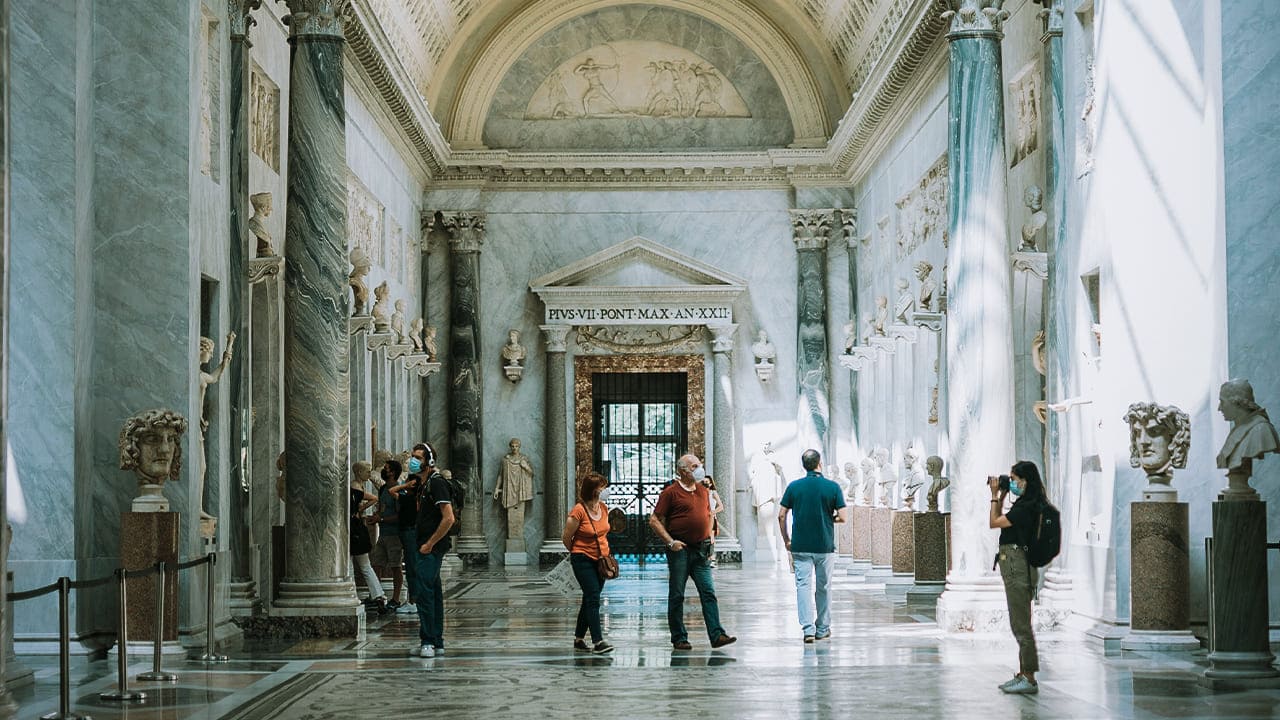
If you think going to a Museum is boring, you are doing it wrong!
In fact, it is a lovely experience walking around a museum that has acquired, preserved, researched, interpreted and exhibited the material and immaterial evidence of society & its character. Each exhibit has a story, only if we let it whisper it to us. An ancient urn that holds the secret of the elegant society that it was a part of. The armour and the sword that saved a brave warrior who fought valiantly for his people from the tyranny of a terrible invader. The palanquin that concealed a gorgeous queen from prying eyes and carried her to safety. A broken clay bowl used to feed millet porridge to a hungry child who lived thousands of years ago in a well-planned city. A beautifully woven garment telling about the rich tapestry of the then civilisation. Excavated bones of dinosaurs confirm their unbelievable size & shape, which otherwise would’ve been hard for us to believe. Pieces of art, sculpture, ancient manuscripts, old devices and equipment prove that remarkably intelligent people walked this earth long before we arrived.
Table of Contents
Museums are Wormholes to Other Worlds

The value of these old objects is profound. It helps maintain materials of cultural, historical & religious importance to showcase them to the public, pique interest in various subjects like history, culture & art while offering amusement, and are crucial for research & educational purposes.
It is a repository of the history of a bygone era’s extinct lives and cultures. For the tourists especially, they provide them with a glimpse of the cultural milieu of the land while being a good source of entertainment.
How many Museums in India are there?
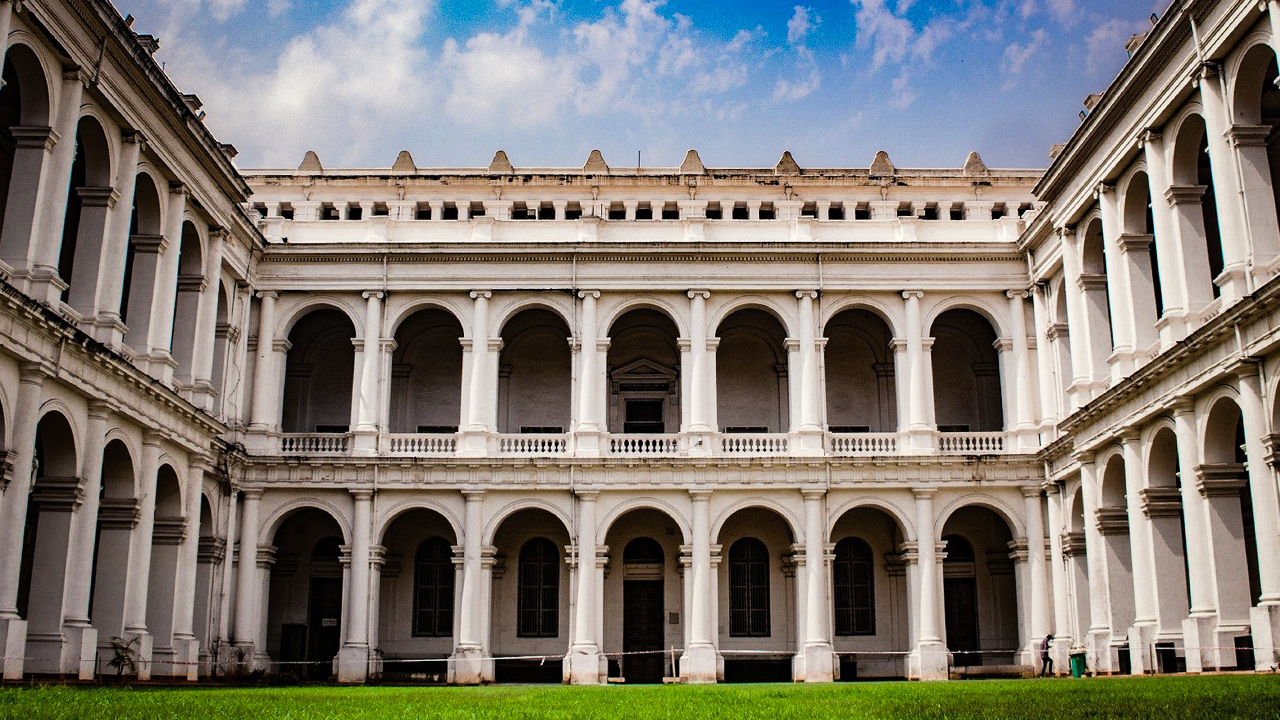
India is a land of mind-boggling diversity, with each state having a distinct culture, back story, food preferences and way of life. The history of this land dates back several thousand centuries. Each city, town or any place of interest is almost like a living museum with tons of history attached to it. So it is no wonder that there are nearly 1,000 museums in India. These include museums under the Central & State governments, District level Museums, Museums run by Universities, and many other private museums. Each Museum is unique, giving us a different perspective of the Indian subcontinent.
Aertrip has cherry-picked ten museums from different parts of India that one can visit to somewhat comprehend India’s enigma!
1. The National Museum, Delhi
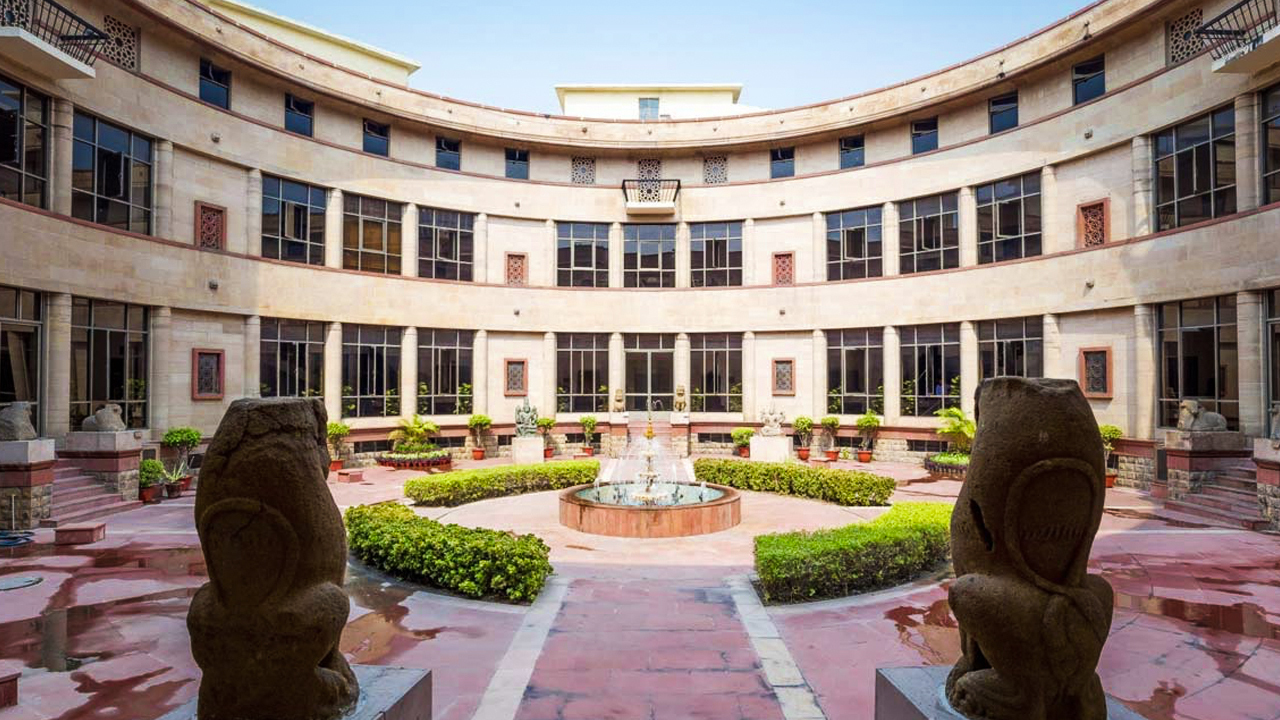
When visiting Delhi for the first time, the best place to start exploring the city is to visit the National Museum here. This visit will equip you with the historical knowledge you require for exploring the capital city and the rest of India. The museum owns some 150,000 items covering almost five millennia that document the history & culture of the Indian subcontinent. The highlights of the museum are the Chola statue depicting the cosmic dance of Lord Shiva, artefacts from the Indus Valley Civilization, relics of the Buddha from Piprahwa and an incredible collection of miniature paintings.
Located on the corner of Janpath, the National Museum was inaugurated on August 15, 1949. Over the years, it has acquired numerous collections, including archaeological exhibits dating back to the Harappan civilization, Buddhist art, miniature painting, coins, textile, Western art, arms and armour, etc.
⏳ Timing
10 am to 5 pm from Tuesday to Sunday.
? Entry Fee
For Indians, ₹20 and for foreign nationals ₹350.
Free entry for students with I-Card.
? Camera Fees & Rules
A still camera is allowed for a fee but only for private, non-commercial use. Mobile and video cameras are not allowed.
? Other Facilities
A canteen and two museum shops.
2. Salar Jung Museum, Hyderabad
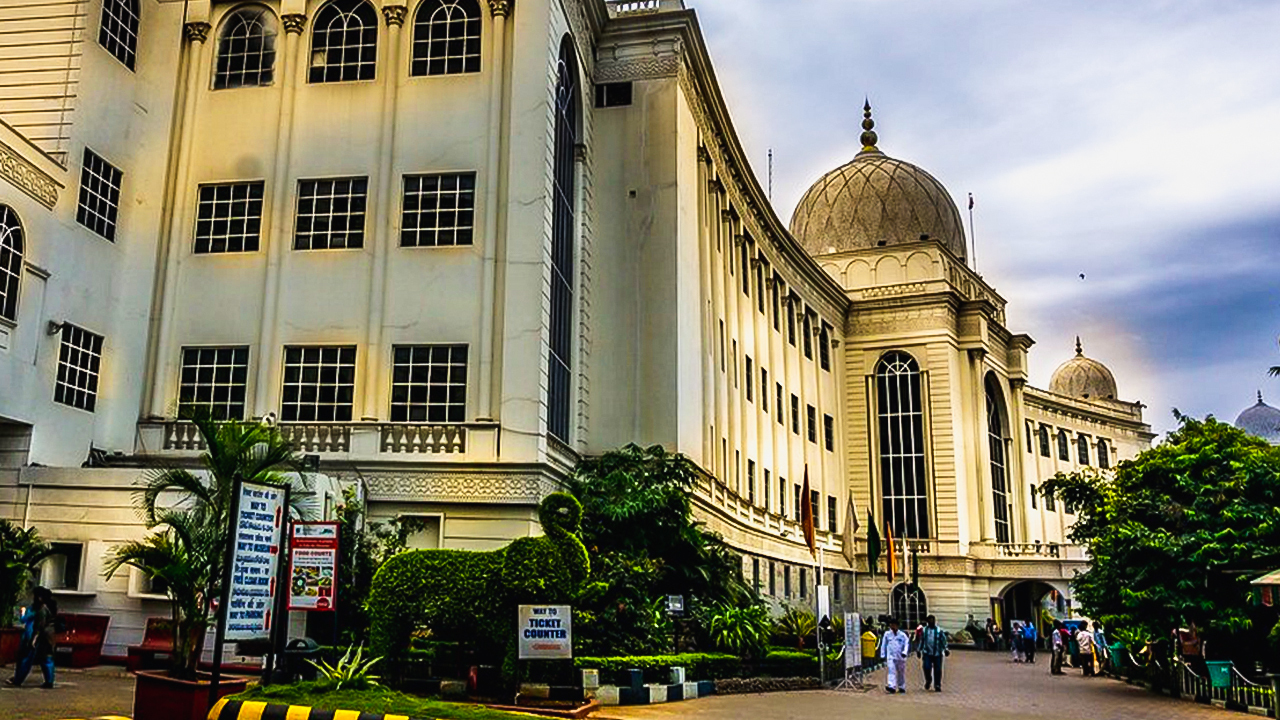
The Salar Jung Museum was originally the result and collection of one person, Nawab Mir Yousuf Ali Khan, also known as Salar Jung III, who devoted his entire life to enriching his art and literature treasures. Not only was he a great collector of antiques, art and rare manuscripts from around the world, but he also patronized poets, writers and artists, encouraging literary & cultural activities. This personal collection spanning over forty years, was left behind without an inheritor after he passed away. The family members of the late Nawab then gifted the fabulous collection to the nation for public display.
Located at Darushifa on the southern bank of the Musi River in the city of Hyderabad, Telangana, India, the museum has a collection of extraordinary sculptures, rare paintings, exquisite carvings, textiles, manuscripts, metallic artefacts, ceramics, clocks, carpets, and furniture from countries like India, Nepal, Japan, China, Burma, Europe, Persia, Egypt, and North America. This National Museum of India is counted among the largest museums in the world. There are three blocks with 27 galleries in the Indian block, 7 in the Western block and 4 in the Eastern block.
Some displays are of global fame, such as the Veiled Rebecca—a marble statue acquired from Rome in 1876, the life-size double statue of Mephistopheles (in front) and Margareta (at the back) made from a single block of wood, the Shahnama by Firdausi, the rare Lilavati manuscript—a treatise on mathematics, a remarkable collection of European clocks, amongst others.
⏳ Timings
10 am to 5 pm from Saturday to Thursday.
? Entry Fee
For Indians, ₹20 and for foreign nationals ₹500.
Free entry for children below 18 and students with I-Card. 50% Concession for defence personnel in uniform & organized Kisan parties
? Camera Fees & Rules
A fee of ₹50 for a still camera.
? Other Facilities
Sitting arrangements for visitors at all necessary places. Wheelchair accessible. Public facilities such as cloakrooms & restrooms at all cardinal points. Cafeteria run by Telangana Tourism department.
3. Indian Museum, Kolkata
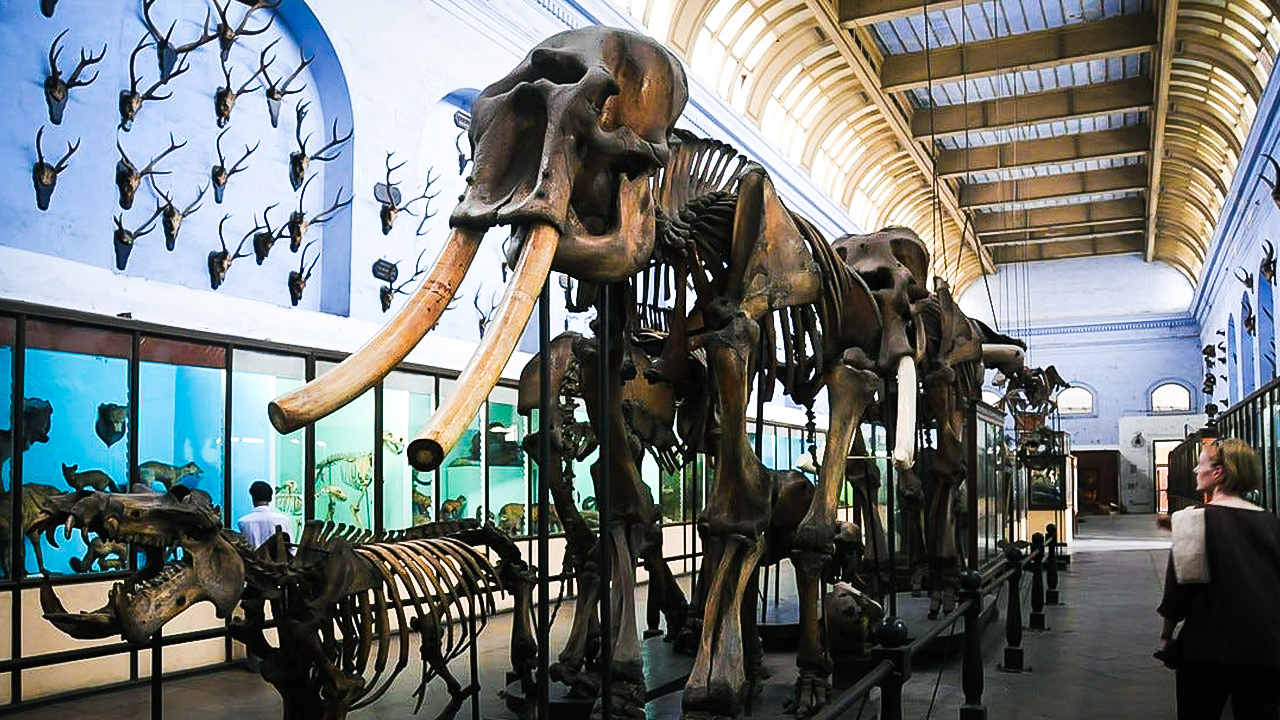
The Indian Museum in Kolkata, located on Jawaharlal Nehru Road or Chowringhee Road; near Park Street, has rare collections of antiques, armour, ornaments, fossils, skeletons, mummies, and Mughal paintings. Indian Museum is over 200 years old and the largest Museum in the Asia-Pacific region of the world. It was founded in 1814 by the Asiatic Society of Bengal in Kolkata with founder curator Dr Nathaniel Wallich, a Danish botanist.
It has six sections comprising thirty-five galleries of cultural and scientific artefacts, namely the Bharhut gallery, Gandhara gallery, Bengal painting gallery, mask gallery, Egyptian gallery, rock and mineral gallery, bird gallery, and others. They cover Art, Archaeology, Anthropology, Geology, Zoology and Botany. Exhibits of the Museum include dinosaur skeletons, replicas of the 2nd century BC Barhut Stupa, etc. It also houses the 4,000-year-old Egyptian Mummy and the urn that is said to contain the relics of the Buddha.
⏳ Timing
10 am to 5 pm from Tuesday to Sunday.
Closed on some public holidays.
? Entry Fee
For Indians, Adults ₹50 & children ₹20 and foreign nationals ₹500.
? Camera Rules & Fees
Smart Phone with Camera ₹50
Camera ₹100
Small Video Camera ₹2,000
Camera with Stand ₹5,000
? Other Facilities
Wheelchairs are available with ramps at appropriate places, a lift facility, description of the Bharhut gallery in Braille. Specialized Washrooms for Differently abled Visitors.
Cafeteria from 12 pm – 3 pm (may be closed on some Saturdays & Sundays), Cloakroom, Library, Museum shop, Washrooms, Guide service, Auditorium, emergency exits.
4. Chhatrapati Shivaji Maharaj Vastu Sangrahalaya, Mumbai
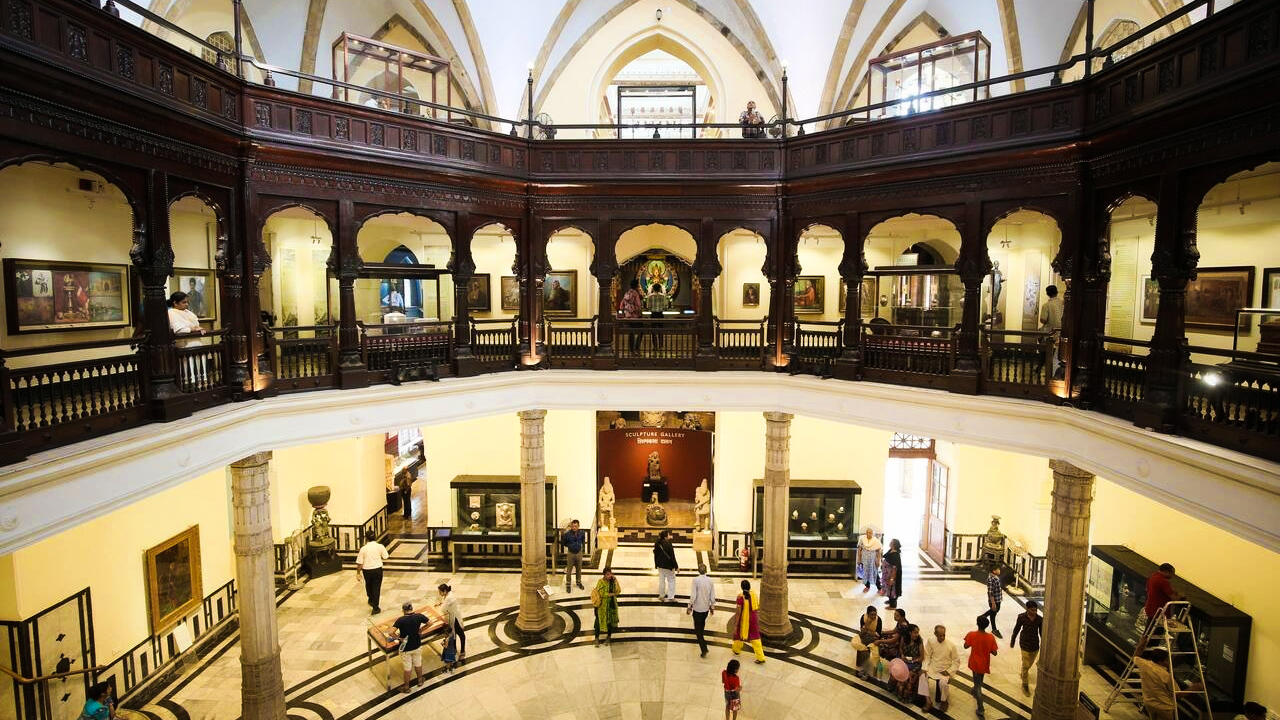
The Chhatrapati Shivaji Maharaj Vastu Sangrahalaya was established during the British Raj in 1922, nestled in the heart of South Mumbai. It was known as the Prince of Wales Museum before and is housed in a beautiful three-story rectangular building capped by a dome that adds an extra storey to the centre of the building. It follows an Indo-Saracenic style of architecture and is surrounded by a vast garden with decorous flower beds & palm trees that enrich the grace of this antique structure. The inside building is beautifully tiled with blue and white flecks and supported gracefully on a lotus-petal base.
The large and airy galleries contain several galleries related to history, natural history, Indian culture and various art forms from India, the Far-Eastern states, Nepal and Tibet, and Europe. The CSMVS Museum has a collection of 70,000 historic & artistic artefacts reflecting the story of the human race from the stone age to contemporary times.
⏳ Timing
10.15 am to 6 pm on all days.
Closed on some public holidays.
? Entry Fee
For Indians, Adults ₹150, children ₹35, college students with I-card ₹75 and foreign nationals ₹650. The ticket comes with a complimentary mobile photo pass
? Camera Rules & Fees
Handheld camera without a tripod – ₹200
Video camera – ₹5,000
Selfie sticks are strictly prohibited in the museum.
Professional video shooting and commercial photography require prior permission from the museum’s authorities.
? Other Facilities
Parking is available in the pay & park lots at Hutatma Chowk and Kala Ghoda. Museum shop and cafeteria. Facilities for differently abled visitors.
5. Government Museum, Chennai
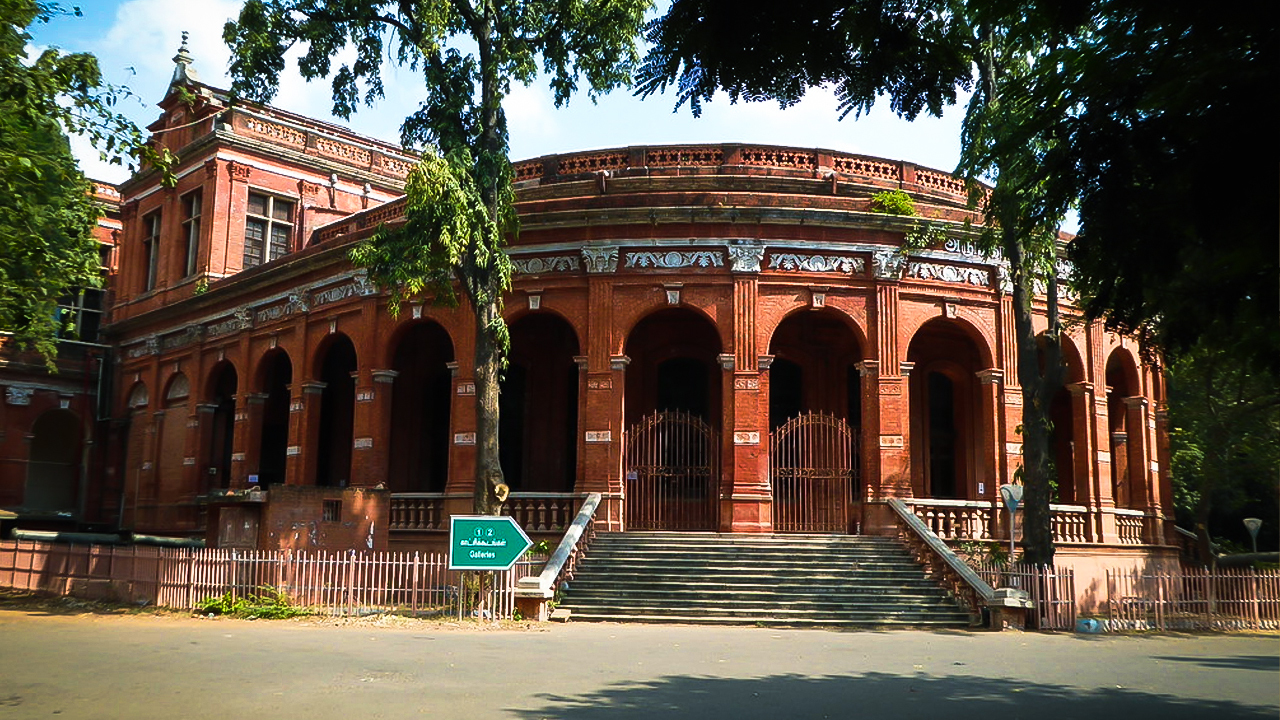
The Government Museum was established in 1851 in an iconic structure built in Indo-Gothic style and is famous as the Madras Museum. It is the second oldest museum in India, which celebrated its centenary in 1951. This museum is a treasure in itself and is located in Egmore. Its campus has six independent buildings with 46 galleries with exhibits on archaeological finds, zoological specimens, anthropological exhibits, wood carvings, bronze items, dolls, and some Raja Ravi Varma paintings.
It also houses the most extensive collection of Roman antiquities outside Europe. The Bronze Of Ardhanariswara, the 2nd Century AD Amaravati Buddhist Site relics and prehistoric South India are some of the most priced collections of the Government Museum in Chennai.
⏳ Timing
9.30 am to 5 pm from Saturday to Thursday.
Closed on Fridays and some public holidays.
? Entry Fee
For Indians, Adults ₹15, children ₹10, college students with I-card ₹75 and foreign nationals Adult ₹250 & Children ₹125. The ticket comes with a complimentary mobile photo pass
? Camera Rules & Fees
Still Camera – ₹200
Video Camera – ₹500
? Other Facilities
Museum Theatre. Connemara Public Library. Children’s Museum
6. Calico Museum of Textiles, Ahmedabad
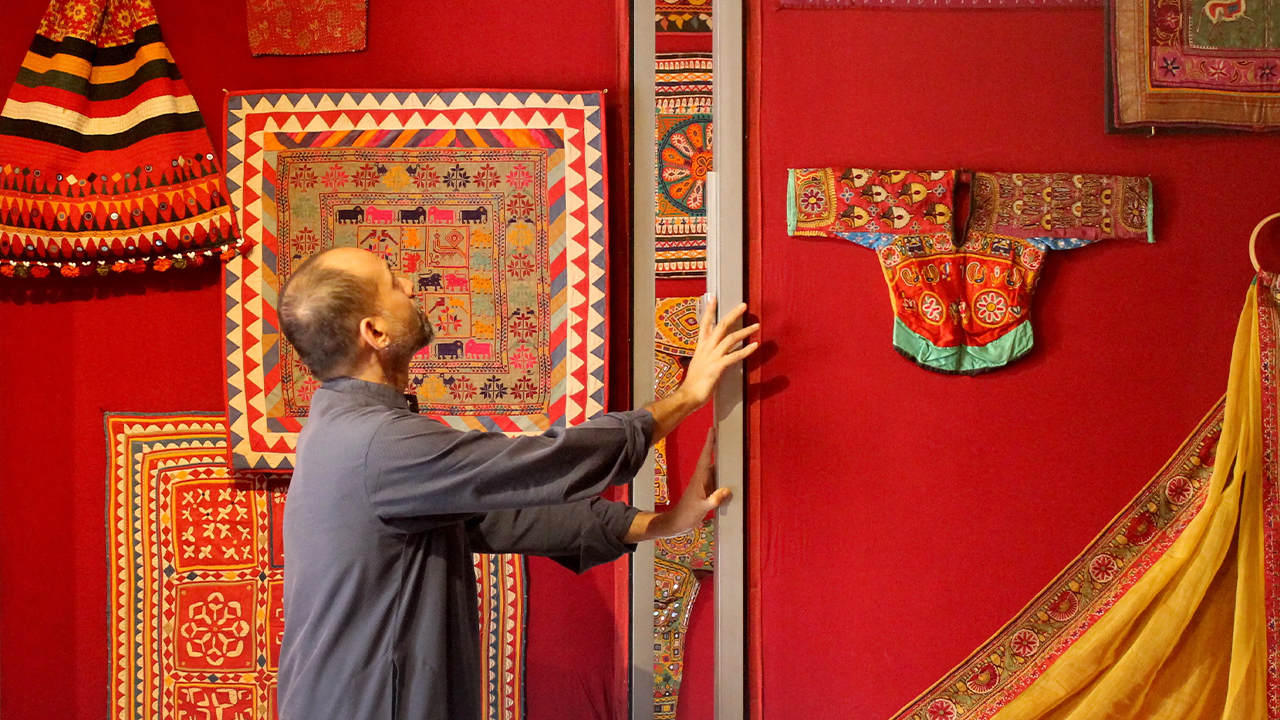
To fully understand India’s diversity, you must learn about this nation’s rich textile history. India boasted of the finest fabrics and weaves that were prized all over the world at one time till Industrialisation nearly destroyed this extraordinary craftsmanship. This one-of-a-kind museum is an ode to this legacy and is thus included in this list. The Sarabhai Foundation manages the Calico Museum of Textiles. The museum is located in the Retreat Complex of the Foundation’s Shahibagh premises in Ahmedabad.
It contains a fine collection of antique & modern Indian textiles and is considered the finest and most comprehensive in the world. Prior permission is required to visit the museum. The main textile galleries are housed in the Chauk section, and only 20 visitors are allowed, who are then taken on a two-hour guided tour starting at 10.30 am. The Haveli section, with its collection of religious art, is open to 10 visitors only, who are then taken on a two-hour guided tour starting at 3 pm.
⏳ Timing
Entry is permitted between 10.15 am and 10.30 am, and the guided tour is from 10.30 am to 1.00 pm.
Visitors have to pre-register for the tour via their website –www.calicomuseum.org or Call 91-79-22868172/22865995
Booking timing from 10.30 am – 1.45 pm and 2.45 pm – 5.00 pm. Except on Mondays and public holidays.
? Entry Fee
Entry is free, and children below 10 years of age are not allowed on the museum tour.
? Camera Rules & Fees
Photography or videography is not permitted on the premises.
? Other Facilities
Books, black & white photographs, reproductions of selected pieces of cloth, colour prints of some objects & paper are available at the shop. Wheelchair access to the galleries is currently unavailable.
No handbags or baggage, cameras or mobile phones are allowed on the premises. Therefore, visitors must leave their belongings in their own vehicles before entering the museum.
7. Napier Museum, Thiruvanantapuram
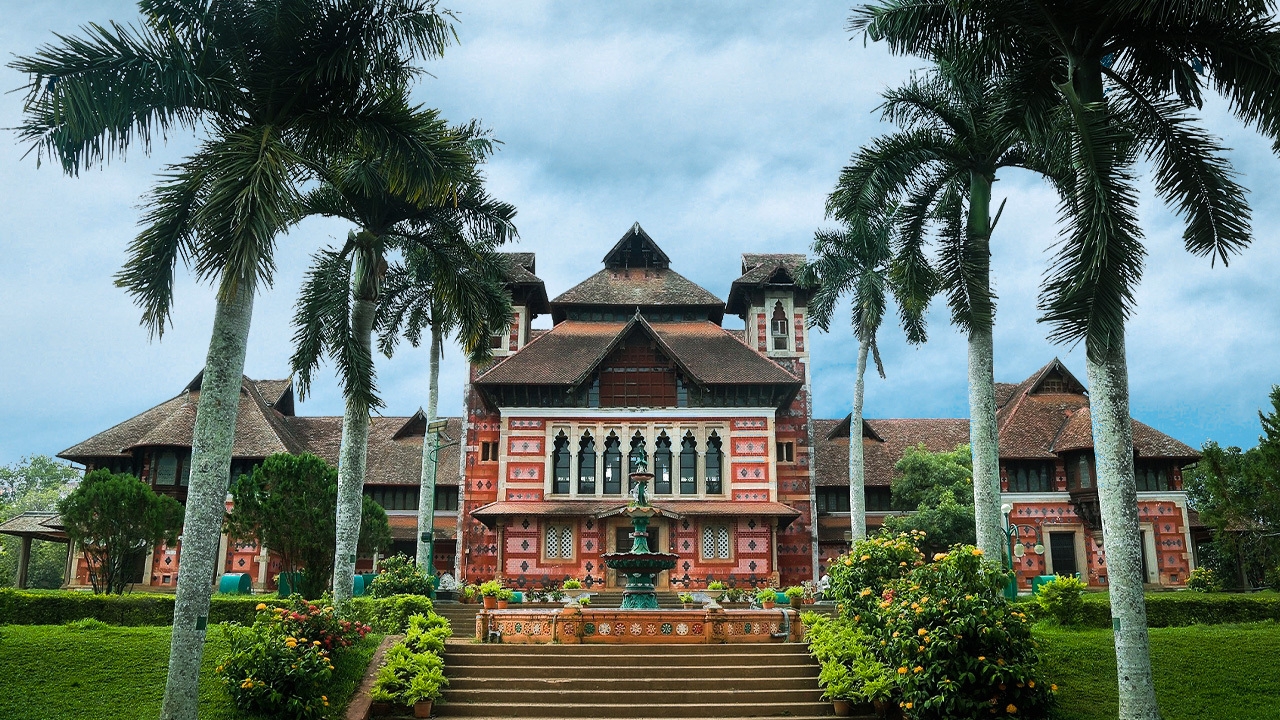
The Napier Museum in Thiruvananthapuram in Kerala is also known as the Government Art Museum and is located in the heart of the city. It shares its premises with the Zoological Park, Art Gallery, Sree Chithra Enclave, KCS Panicker Gallery, Aquarium and 3D Theatre. The architectural style of the museum is a mix of Indian, Chinese, Kerala and Mughal Schools of Architecture and is in itself a great appeal. It was built in the 19th century and has its own natural air-conditioning system.
The museum contains objects of archaeological and historical significance, a temple chariot, bronze idols, old ornaments, ivory carvings, etc. The Natural History Museum too is located on the same premises.
⏳ Timing
10 am and 4.45 am, from Tuesday to Sunday.
Closed on Mondays, Wednesdays, forenoons, January 26th, August 15th, Thiruvonam and Mahanavami.
? Entry Fee
₹10 per person for Persons above 12 years
₹5 per person for Persons below 12 years & above 5 years
₹25 for Family ticket (father, mother & two children)
₹100 for Group (35 students & two teachers)
? Camera Rules & Fees
Visitors can request permission to use professional cameras to shoot inside museums after paying a fee of ₹2,000.
? Other Facilities
The museum was recently renovated and now has a refreshment room with all necessary amenities for visitors, an online portal, and a mobile app. Kids park with 15 new rides.
8. Dakshinachitra Museum, Chennai
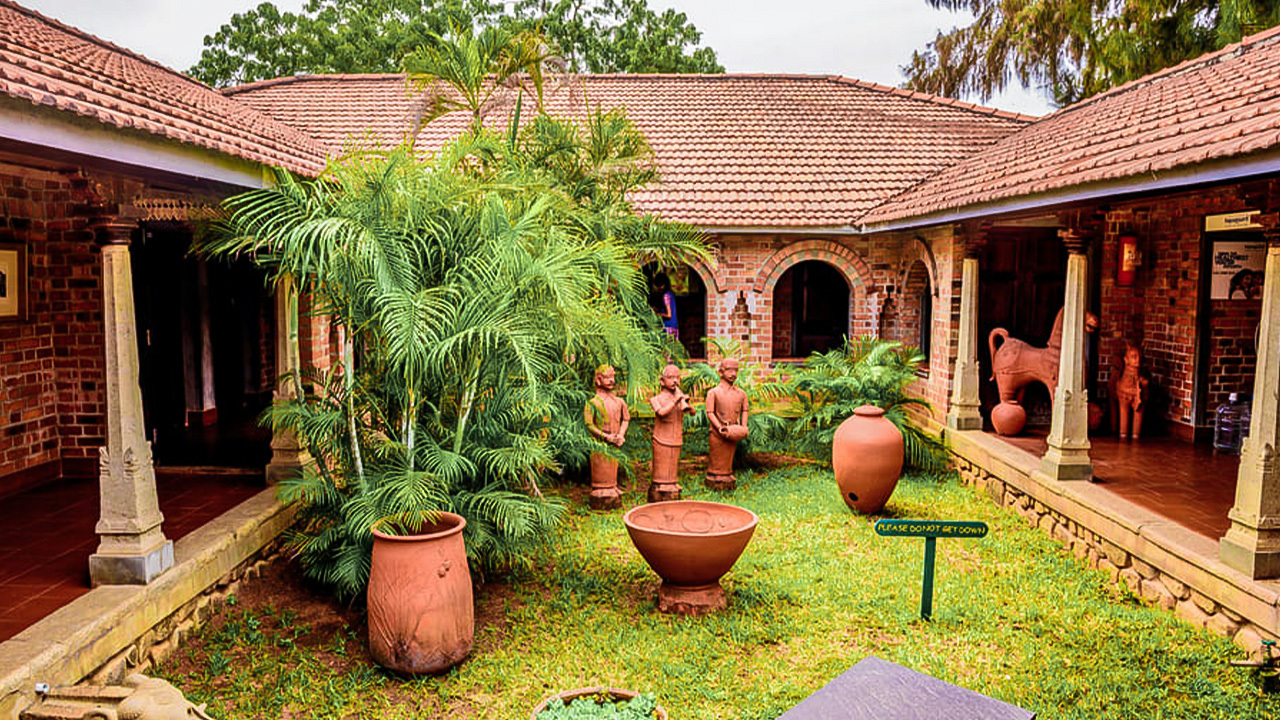
Dakshinachitra Museum is located in Chennai city of Tamil Nadu to inspire people to new ways of looking at South India’s cultural traditions and their connections to the present and to the future. It is a stimulating place that gives a glimpse of the art, lifestyle, architecture, crafts and performing arts of Tamil Nadu, Kerala, Karnataka, and Andhra Pradesh. Dakshinachitra Museum, spread over 10 acres, was established in 1996 and maintained by the Madras Craft Foundation.
The unique feature of this museum is a collection of 18 authentic historical houses with contextual exhibits in each home. All these houses were bought, relocated and reconstructed at DakshinaChitra, which were commissioned for demolition by their owners.
⏳ Timing
10 am to 6 pm.
Closed on Tuesday. Open on all national holidays except on Diwali.
? Entry Fee
The fares vary on weekdays & at weekends.
For Indians, Adults ₹150 & 175 & Children ₹60 (age 5-12) & ₹100 (age 13-18)
For foreign nationals, Adults ₹350, foreign students ₹100
? Camera Rules & Fees
Visitors can request permission to use professional cameras to shoot inside museums after paying a fee of ₹2,000.
? Other Facilities
Reception, Orientation film, Restaurant, Guest House, Library, open-air theatre, conservation lab, ceramic centre, craft shop & bazaar, & seminar hall.
9. Albert Hall Museum, Jaipur
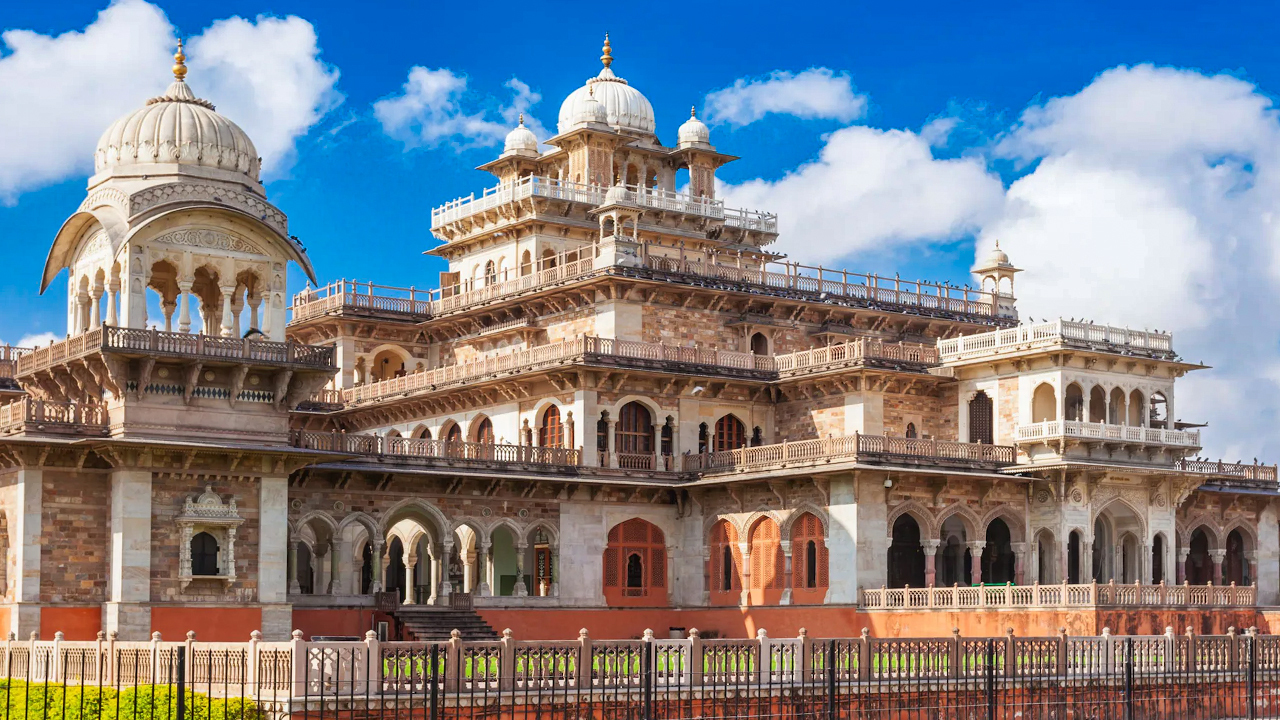
The beautiful building of the Albert Hall Museum, also known as the Government Central Museum, is located in Ram Niwas garden in Jaipur. The museum was conceived to acquaint the youth and visitors with the local artistry and to help the craftsmen improve their craft. It is a good representation of the Indo-Saracenic style of architecture and design used by the Britishers for government and public buildings.
The museum boasts of 16 galleries that showcase various antiques & heritage artefacts that have been gifted or belonged to the royal family of Jaipur. It gives visitors a glimpse of the designs that were hand made creations by local craftsmen, such as the blue pottery of Jaipur, figurines & sculptures made of clay, various metals, and marble with delicate designs & shapes, a horse puzzle of different human faces, a large hookah (fit for the king), an assortment of guns, daggers, spears and knives, collection of old coins, different semi-precious stone jewellery, musical instruments, stained glass paintings, wax statues of soldiers, kings, miniature paintings, carpets garments worn by royalty and even replicas of different sculptures.
The museum even houses the most famous attraction, an Egyptian mummy’s sarcophagus enclosed in a glass case.
⏳ Timing
9 am to 5 pm.
Closed for maintenance and upkeep: Last Tuesday of each month from October to March & last Monday of each month from April to September.
? Entry Fee
Indian visitor- ₹40 per head
Foreign visitors ₹300 per head
Indian student ₹20 per head
Foreign students ₹150 per head
Cost of the audio guide for Indians ₹110 approx.
Cost of the audio guide for Foreigners- ₹170 approx.
Night visit- 7 pm to 10 pm with ₹100 as entry.
Free entry at the museum on World Heritage Day, Rajasthan Day, World Tourism Day and World Museum Day.
? Camera Rules & Fees
Photography is allowed in the museum.
? Other Facilities
Cafeteria, locker room, garden, guides, library, restrooms.
10. Don Bosco Center For Indigenous Cultures, Shillong
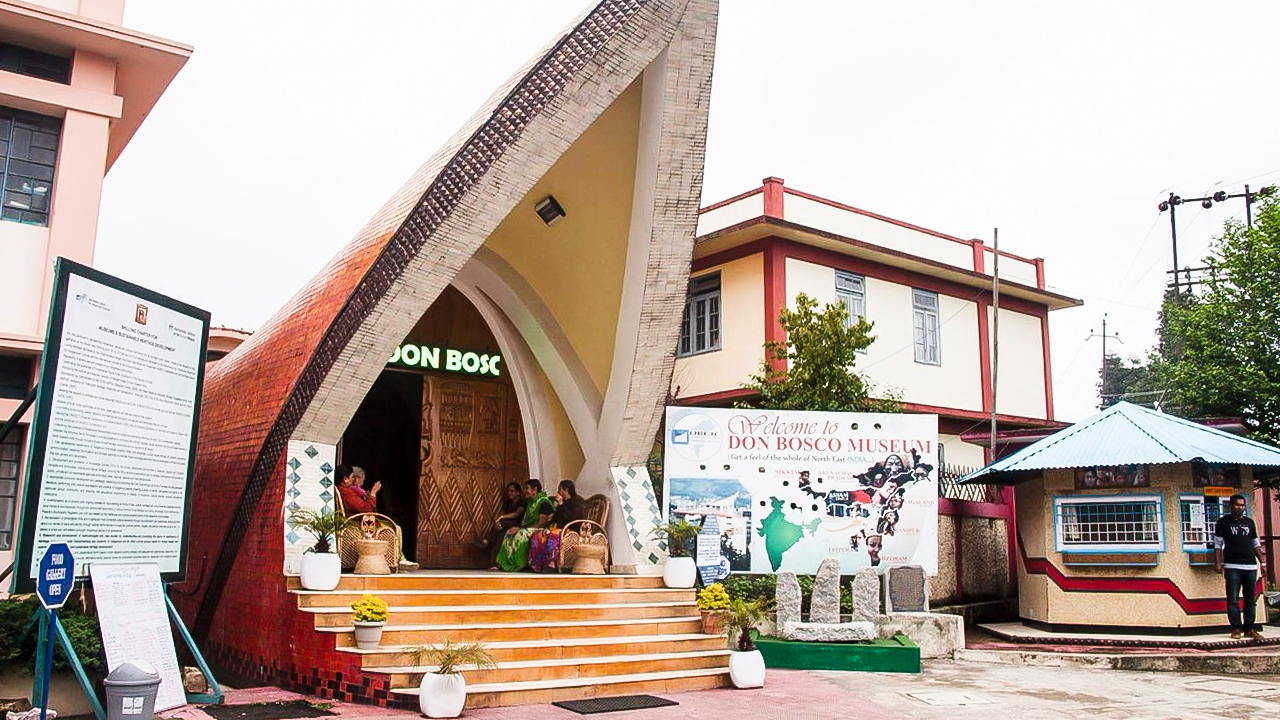
The Don Bosco Museum in Shillong is a fascinating repository of tribal artefacts with tools, clothing & other indigenous artefacts on display. Its building is seven storeys high, and each level represents one of the seven sister states of the Northeast. The architecture of the building is shaped like a honeycomb that allows light &fresh air to pass through easily. It has become a well-known tourist spot to understand the rich and multicultural lifestyles of the indigenous peoples of North East India.
If you want to learn about North East Culture and Civilisation in a few hours, this is the place to visit. It is so elaborate and extensive that it requires patience to absorb its vast collections. Ideally, one should make a few leisurely visits here rather than being there only once.
An added attraction is the Skywalk on top of the Museum, giving a panoramic view of Shillong, making it a wonderful and educative experience at the same time.
⏳ Timing
The Museum is open from Monday to Saturday and closed on Sunday.
In Summer, from Feb. 1 to Nov. 30 from 9:30 am to 5:30 pm (Last Entry at 4:30 pm)
In Winter, from Dec. 1 to Jan. 31, from 9:30 am to 4:30 pm (Last Entry at 3:30 pm)
? Entry Fee
For Indians, Adult: ₹100
Students, Indians: ₹50
For Foreign nationals: ₹200
Students, Foreign nationals: ₹150
? Camera Rules & Fees
Photography is allowed in the Museum for a fee of ₹100.
? Other Facilities
A/C media hall, Computer area for kids, Drinking water, Lift for the elderly and sick, Parking, Snack Bar & Cafeteria
Souvenir Counter & Book Corner, View of Shillong from Skywalk, Waiting Lounge and Wash Rooms.
Note: Keep in mind that many may be shut down during the pandemic. Also, most museums have their own schedule of holidays. So do check on their websites if you plan to visit on a public holiday.
Visit Museums In India as Often as You Can!
The humble museums have the power to reflect & shape our society and, therefore, will always have a role to play in education for all generations.
The best part is technological advances have made museums more accessible. During the pandemic, museums & galleries started sharing their collections online. For example, AR & VR, digital guides, mobile apps, and digital trails are all becoming available to anyone & everyone.
Nevertheless, take advantage of every opportunity to visit a museum in person wherever you are or go.
Get Visas, and book flights, hotels, and holidays only on Aertrip.
